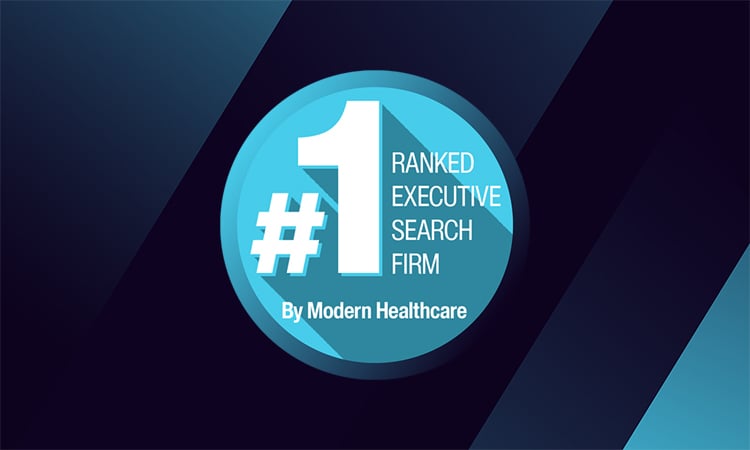
Is a Healthcare Career in Interim Leadership Right for You?
As Baby Boomers approach retirement and healthcare continues to change at an accelerated pace, many executives are evaluating career alternatives. One less-traditional, but increasingly utilized path that merits a thorough examination is interim leadership. As a long-time leader in employing and placing interim executives, B.E. Smith offers a unique vantage point. This industry report mines the company’s experience as well as research from the recently completed Interim Intelligence Survey to offer important considerations for those asking the question: Is interim leadership right for me?
A Profile of Today’s Healthcare Interims
Examining the attributes of a typical interim executive today can serve as an excellent starting point to assessing your potential interest. According to the Intelligence Survey, successful B.E. Smith interims exhibit these characteristics:
- Healthcare experience: While B.E. Smith has placed interim executives with experience ranging from 4 to 49 years, the average is 33 years in healthcare roles.
- Area of expertise: Top areas of specialization are Operations and Quality/Performance Improvement, followed closely by two intensifying needs in healthcare systems today: Patient Engagement/Experience and Patient Safety.
- Proven leadership: Two-thirds have demonstrated leadership skills through director-level or C-suite interim engagements.
- Analytic and strategy skills: By a significant margin “assessing organizational needs” topped the list of respondents’ self-described professional strengths. Interims also noted the importance of establishing interdepartmental relationships, implementing strategy with limited resources, and introducing new ideas to clients.

Healthcare organizations seek interims’ assistance in managing priorities and responsibilities across the executive suite, based on specific circumstances. However, the survey found certain hospital departments deploy interims more regularly: surgery, ICU, and emergency.
Consider Client Demands and Expectations
Learning more about what prompts hiring organizations to retain an interim – as well as expected outcomes for the role – can also prove helpful for determining whether a similar placement may be right for you. Major trigger points that push organizations to engage an interim leader include:
- Anticipated change of an incumbent executive
- Vacancy filling
- New position creation
 Clients often seek a concentration of expertise surrounding a specific need, noted as the top reason for using an interim by almost 30% of survey respondents. Those specifics tend to group into four broad categories, as summarized in Figure 1.
Clients often seek a concentration of expertise surrounding a specific need, noted as the top reason for using an interim by almost 30% of survey respondents. Those specifics tend to group into four broad categories, as summarized in Figure 1.
- Helping attain a particular objective.
- Driving short-term change. As one leader put it, “The interim is able to make difficult transitions in order to set up the permanent placement for success and a fresh start.”
- Reorganization. Interims often are called into situations in which a vacancy prompts a reorganization effort that an independent executive can more delicately handle.
- Clarifying changing roles. Interims sometimes occupy positions during periods of role reassessment and can help think through requirements of a redefined role.
Interim Success Factors
There are several key qualities and attributes which promote success in the interim role. Figure 2 displays the insights gleaned from this year’s survey of interim leaders. Most notably, interims cited:
- Flexibility to adapt to each organization’s unique market philosophy, culture, and work environment.
- Specialized domain knowledge that complements broad general experience as well as a willingness to “share knowledge when asked.”
- The right attitude and mindset, identified as approachable, confident, and non-judgmental.
- Listening and team-building skills for today’s collaborative healthcare climate.
Hiring organizations ratify the factors identified by interims themselves, emphasizing the importance of execution in an effective interim arrangement. Surveyed clients overwhelmingly defined success as “getting the job done.” These organizations are seeking interim leaders who can:
- Get up to speed quickly
- Work frequently “with little or no guidance”
- Be culturally sensitive in order to gain organizational buy-in for often difficult changes
Interim Motivating Factors
While placements are temporary by design, interim leaders regard the role as a career. There are several factors that lead executives to pursue this nontraditional route – and to continue with it for extended periods.
According to the survey, an independent and flexible lifestyle is the top reason healthcare professionals become and remain interim leaders. (See Figure 3) In an environment where generational workforce shifts continue to evolve — and industry transformation reshapes many roles — interim placements offer an alternative to full retirement or permanent positions that many find alluring.
The satisfaction that results from employing their knowledge and skill to create customized client solutions is a close second motivator of long-time interims. Other leading contributors include work variety, being valued for one’s expertise and sharing that knowledge and talents with staff and leaders at client organizations.
Common Challenges Interims Face
B.E. Smith experience strongly supports the idea that finding the right fit between interim and client organization is crucial. Yet even with intently chosen pairings, interims can still face challenges outside of their control. Prospective interims should evaluate their ability to address these challenges, should they occur, to optimize their chances of success. Top mentioned barriers:
- Organization-specific barriers. Organizational silos such as information, process steps, and decision authority can add challenges to an interim’s efforts and progress. It also presents an opportunity for the interim to have greater impact on the organization’s culture.
- Resource constraints. Interim leaders need to achieve goals and outcomes with the resources available in the organization. While interim leaders frequently mention limitations of resources as a challenge, it also presents an opportunity for the interim to utilize their experiences and bring fresh perspectives to work with organizational leadership to create innovative solutions.
- Internal resistance. Interim leaders also identified challenges in regards to resistance from internal staff. This resistance is often broad, with staff struggling to change from “a deeply ingrained status quo” or having general apprehension with concern the interim leader will make staff cuts. An open, transparent, and collaborative leadership approach can successfully overcome these staff challenges and build stronger relationships across a department or the organization.
- Organizational expectations. A challenge independent consultants can experience is misunderstanding regarding expectations of an engagement. This may include unrealistic timelines and confusion over the role of the engagement. B.E. Smith works closely with its clients in advance of interim assignments to establish clear objectives to avoid or mitigate these issues.
This array of potential challenges explains the high value placed on interim flexibility and adaptability. As B.E. Smith has advised in previous research notes: “Interim leaders must work with the organization’s parameters, fix what they can, and move on.”
Interim Leadership’s Many Benefits
Despite any challenges, the upsides to interim leadership are substantial, and high satisfaction levels illustrate that fact. The Interim Intelligence report confirmed that interims and healthcare organizations agree on many of the benefits generated:
- Exercising deep experience and expertise to make an impact and produce well-documented, measurable results.
- Acting as an “agent of change,” especially for changes that are difficult for permanent or full time leaders to make.
- Bringing “fresh views and perspectives.”
- Creating organizational stability during vacancies and leadership changes.
- Offering valuable mentoring assistance to incoming executives.
Employment Model Considerations
 Executives weighing interim leadership should also assess the pros and cons of existing employment models. One option is independent contracting, in which interims assume all the risks and responsibilities of the role. B.E. Smith has long offered an alternative, directly employing interim executives. Through this model, B.E. Smith reduces risk and administrative burdens by managing medical insurance, 401K, and taxes. The firm also relieves the demands of new business development.
Executives weighing interim leadership should also assess the pros and cons of existing employment models. One option is independent contracting, in which interims assume all the risks and responsibilities of the role. B.E. Smith has long offered an alternative, directly employing interim executives. Through this model, B.E. Smith reduces risk and administrative burdens by managing medical insurance, 401K, and taxes. The firm also relieves the demands of new business development.
According to interim survey respondents, this relationship produces favorable results:
- Overall satisfaction is very strong, with 85% of interims depicting themselves as “highly satisfied” or “satisfied.”
- Two-thirds are highly likely to return as an interim, while 61% would recommend the firm to colleagues.
- Interims give high marks to B.E. Smith’s responsive communication and attentiveness to their needs.
- Client hiring organizations also approve of the arrangement, with 85% either highly satisfied or satisfied with a previous interim experience.
Conclusion
As this report outlines, interim leadership roles offer unique challenges and plentiful benefits. Seasoned executives who desire fresh challenges with increased flexibility should consider the substantial opportunities that exist through a direct-employment model. B.E. Smith stands ready to assist.



